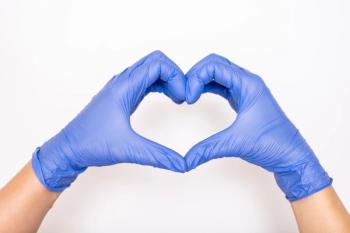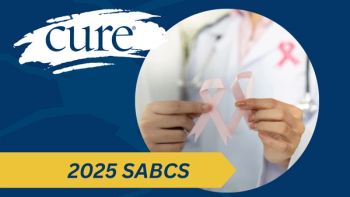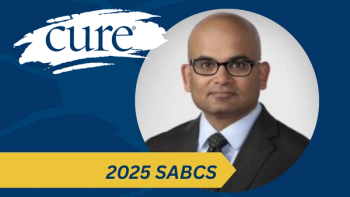Discussions about eating healthier are often had between patients with cancer, survivors and their care teams. However, knowing which food items to incorporate into a diet can be challenging, especially while wandering through aisles at the grocery store.
Understanding how to swap out certain items with healthier versions, learning how to read food labels and getting enough protein are places to start, said Dr. Roshani Patel, a breast surgical oncologist at Hackensack Meridian Health and medical director for breast surgery at Jersey Shore University Medical Center.
She emphasized that implementing healthier options into a diet may help with side effects, but it does not mean it will cure patients’ cancers.
“[Certain food] might help with side effects like nausea, may help you feel a bit stronger,” Patel said, “but you still need to take the medications and go through the treatments that [doctors] recommend.”
Nutrition tips from Dr. Roshani Patel
- Eating a “rainbow of color” when choosing to eat fruits and vegetables for vitamins and nutrients, which can include making fresh salads and homemade pizzas.
- Make it a habit to approach the produce aisle first and avoid junk food and processed food aisles.
- Receiving chemotherapy? Try eating bland food items, including cucumbers and watermelon. These hydrate well and won’t irritate the mouth.
- Don’t feel like eating solid food? Try making a smoothie or juice with a blend of fresh or frozen fruits and vegetables.
Food Items Patients and Cancer Survivors Should Eat
Patel, who voluntarily provides grocery store tours for her patients with breast cancer, shows them healthier food options, items to avoid and already-prepared items to pick up when they aren’t feeling well.
“I've shown patients how to make a good balanced, healthy salad, [and] we'll show them where there's prepared food,” Patel told CURE®. “A lot of times, for patients getting chemotherapy, some grocery stores already have skinless, boneless chicken that's cut up. It's not flavored or seasoned, but they can take it home, add their own seasoning and cook it in a skillet or bake in an oven if they're really tired.”
For Cathy McQueen, getting already-pulled rotisserie chicken from the grocery store was something that “would never have occurred” to her, she explained to CURE®. McQueen, 52, received a diagnosis of breast cancer in December 2022, a week leading up to Christmas, when she mentioned a “bizarre indent” along the side of her left breast to Patel during a scheduled appointment.
“When I had done the grocery tour, I had not started chemo yet. I was about two weeks out. So I was very lucky to have the knowledge in my back pocket before I even started,” McQueen said. “I knew that [the grocery store] had rotisserie chickens, of course, but the thought of taking apart one of those when you're not feeling well, during chemo, I just I never would have done that in a million years.”
In terms of finding food to swap for a healthier version, McQueen opted to switch regular pasta with protein pasta, which includes protein from crushed lentils and crushed peas, among other protein-rich ingredients.
“Instead of getting [regular] pasta, get a protein pasta, so that you're getting your protein from the product, and helping with your strength, [because] everybody during chemotherapy needs their strength, but also, [it’s] just giving that neutral pasta-type food, which is great for somebody that's not feeling well and easy also to prepare,” she explained. “Is there a slight taste difference? Sure, but it's not noticeable. It's not a big deal. My husband [also] eats it now, he doesn't even think twice about it.”
Because protein pasta is still a carbohydrate — which should still be eaten in moderation, according to Patel — McQueen noted that they don’t eat it as often.
Making homemade smoothies and juice is also a good way to incorporate fruits and vegetables, Patel said. Even finding frozen fruit without any added sugars in the frozen section of the store is good, she explained, notably because they “may not spoil as quickly.”
A combination of fruits and vegetables as a juice worked best for Tanaya Brown, 43, who received a diagnosis of breast cancer in October 2023 after, on her birthday, she noticed a lump in her breast. She knew her diet was going to be a major aspect of her process, which is when she decided to attend Patel’s grocery store tour.
During chemotherapy, she found that drinking juices was much easier than eating solid food.
“My favorites were pineapple juice and a cucumber green apple juice,” Brown told CURE®. “[It had] cucumber, green apple, ginger and celery. That was the green drink. I really liked that I also did an ABC drink, which was apples, beets and carrots.”
Brown explained that drinking these juices with ginger helped her minimize symptoms and side effects caused by chemotherapy, especially nausea.
“I put ginger in all of my drinks. I’m on top of taking a ginger shot in the morning,” Brown said. “I’m still juicing and continued to juice even after chemo.”
READ MORE: Cooking Green in the Kitchen for Patients With Cancer
Favorite Grocery Store Picks
Along with the protein pasta, McQueen said a favorite food item that she learned about during the grocery tour was protein shakes — another healthy option she said she wouldn’t have previously tried.
“I’m not a huge meat eater, and I do need to get protein from somewhere,” McQueen explained. “So, Dr. Patel pointed out the protein shakes that she recommends. They have been so tremendously helpful in obviously protein replacement, giving me energy and [making me] feel full and satisfied. So that was a huge help during chemo.”
As for Brown, items from the produce aisle have become her favorite food after attending Patel’s tour.
“My favorite food is cucumber from this tour,” she said. “Give me a cucumber and I will make a cucumber salad. I’ve learned to like tomatoes. I did not like tomatoes before, but I’ve learned to like them because, again, these are all things that are beneficial to me or a [patient with cancer].”
Based on her own experience with the tour, she recommends other patients with cancer and survivors “have fun with it.”
“Be as healthy as you can but have fun with it. It doesn’t have to be so strict, so have fun with it. When you learn to have fun with it, I think it’s easier — you [get to] look up different recipes,” said encouraged. “If you eat the same thing, you’ll get bored and it’s easy to slip back into old habits.”
Food Items to Avoid Eating
Along with Patel’s instructions on eating healthier, she also pointed out some of the food items to avoid.
“Patients need to watch out for artificial sweeteners — there are a couple of different problems with them,” Patel warned. “What happens is anytime you eat something with artificial sweetener, it does tend to increase the cravings for more food or junk food. So people tend to gain weight or increase inflammation in the body just by eating unhealthy items. So it kind of defeats the purpose of having an artificial sweetener.”
She also noted that artificial sweeteners affect the gut microbiome, so “getting fiber is very important and trying to make sure that we have that balance is very important.”
In terms of food items to avoid, Patel emphasized avoiding junk food aisles and areas where processed food is located.
Of note, food labels list sugar amounts in grams and not in teaspoons, Patel said.
“Two grams is what's in a sugar packet. So two packets of sugar are going to be one teaspoon or four grams,” Patel explained. “So again, looking at the added sugar is important. And then saturated fat should genuinely be less than 20 grams a day, [on average]. A lot of it depends on body weight and other factors. But it's not really healthy for the heart. So those are the types of things that we show on the labels, so you know how to read them.”
Now, McQueen has learned her lesson about junk food and processed food items.
“The ridiculous amount of ingredients in some of these processed things is startling. I actually feel guilty for what I’ve done to my body [when I ate] junk,” she admitted. “They’re just loaded with so many harmful things. It was an eye-opener — not just looking at the nutritional panel in terms of total fat, total carbs, total sugars, but really looking at the ingredient list. If something has a million ingredients, you need to put it down.”
For more news on cancer updates, research and education, don’t forget to subscribe to CURE®’s newsletters here.





